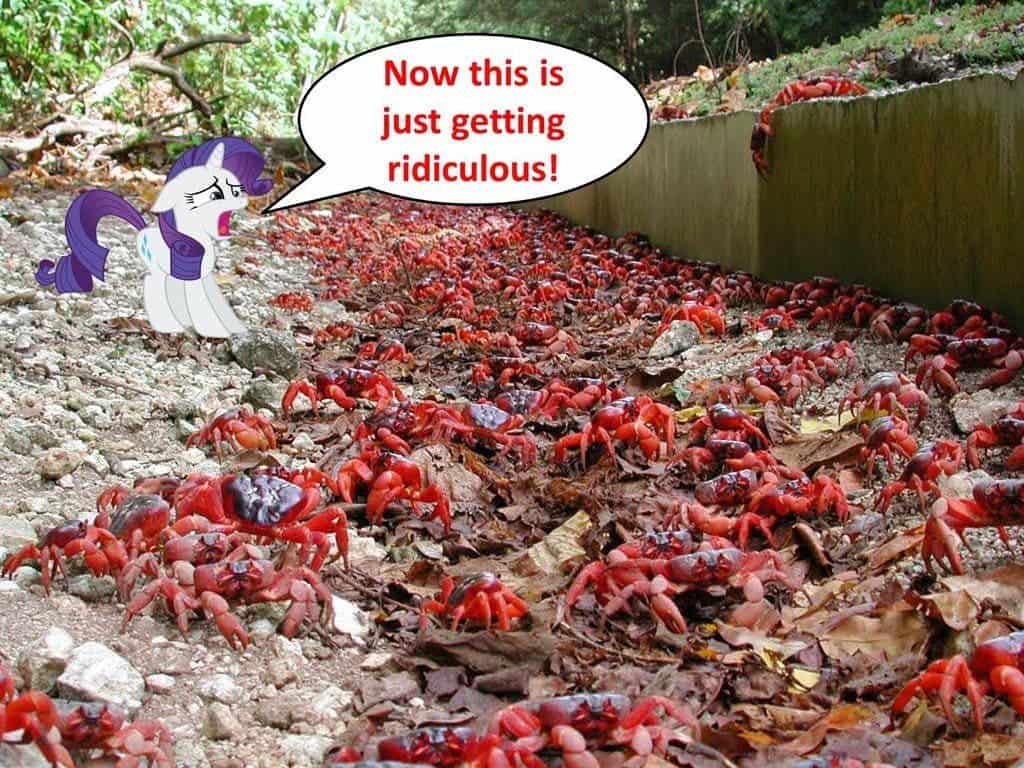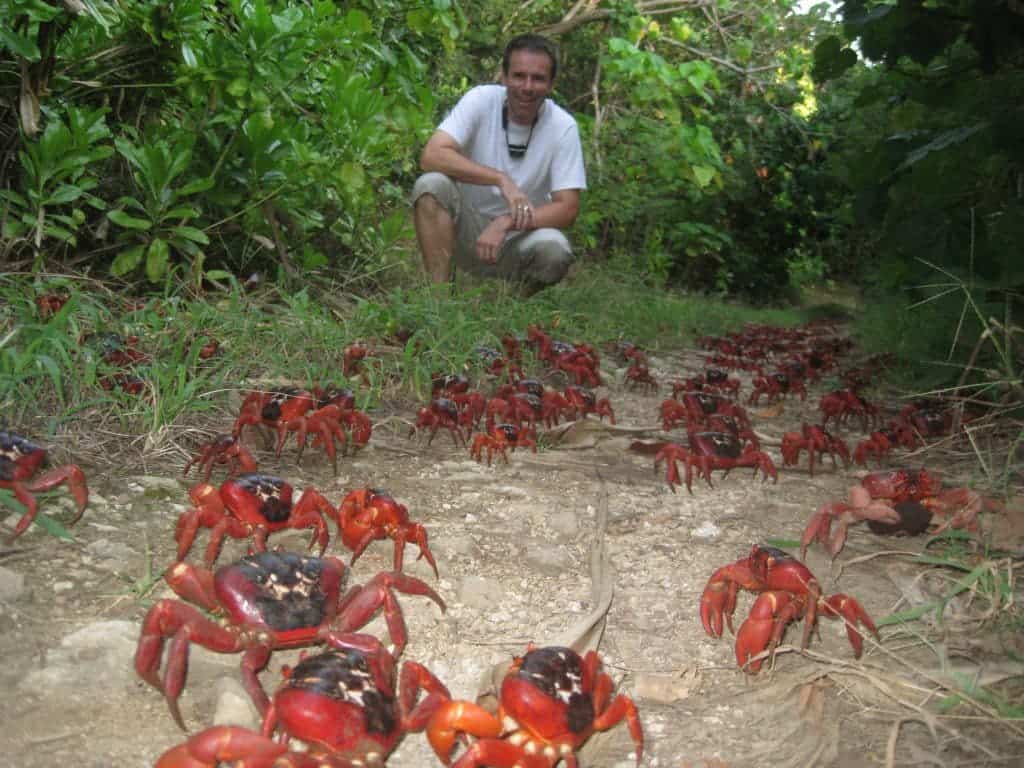Every year, around this time of year, more than 100 million determined crabs take to the streets in a massive attempt to get to their spawning grounds as soon as possible; as a result, they literally flood the streets in Christmas island, covering the streets and forcing rangers to divert traffic and use some quite creative methods of protecting the crustaceans.
However, despite the absolutely huge number of crabs, there have been no reports of violence, from any one of the islands 1200 inhabitants. “It is difficult to see crabs in the houses,” one local resident told BBC Brasil. However, the efforts local rangers have been sustaining are nothing short of laudable; they constructed plastic bridges and fences to keep them from more populated areas and even help them across difficult areas (I don’t know, but I’m guessing difficult urbanized obstacles).
At 135 square km and located 370 km off of Indonesia, this Australian territory is often called the “Galapagos of the Indian Ocean” for its diversity of both plant and animal life. It’s also home to 14 different species of crabs, including the coconut crab, the largest invertebrate in the world. The efforts I mentioned earlier are even more impressive taking into account the 1.5 million people who come to see the amazing wildlife display each year.











